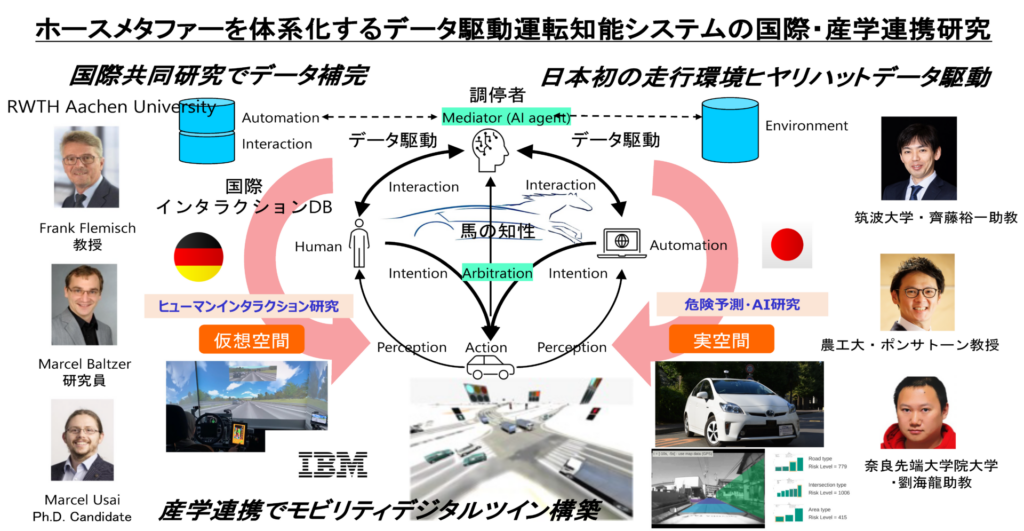Strategic Professional Development Program for Young Researchers
Top Runner Development Program Engaging Universities,
National Labs, and Companies
Fellows (3rd-term)

SAITO, Yuichi
Assistant Professor
Institute of Systems and Information Engineering
University of Tsukuba
- Research fields
- Human machine systems, Human Factors, System Safety and Control
- Research project
- International and industry-academia collaborative research on data-driven driving intelligence systems to systematize safety instincts and interactions in horses
- Keywords
- Hazard anticipation, Human interaction, Shared driving
- Researchers Information
- https://trios.tsukuba.ac.jp/researcher/0000004261
Biography
2015 Graduate School of Systems and Information Engineering, University of Tsukuba (Phd, Doctor of Engineering)
2015 Department of Mechanical Systems Engineering, Tokyo University of Agriculture and Technology, Research assistant professor
2019 Institute of Systems and Information Engineering, University of Tsukuba, Assistant professor
2019 Faculty of Engineering, Tokyo University of Agriculture and Technology, GIA Coordinate Researcher
Research Outline

"Automation" is a technology that replaces functions that have been performed by humans with machines. On the other hand, "interaction" is the ability to respond (action) to each other (inter-). Around 1900, the means of mobility shifted from horse-drawn carriages to automobiles, but the ability for both parties to respond interactively was not inherited. Professor Frank Flemisch (collaborator) of RWTH Aachen University is a pioneer of the horse metaphor, which embodies the ability for both rider and horse to understand each other's intentions, and has proposed a mechanism for "shared control" in dynamically changing the distribution of control authority. In the past, humans have developed automated systems to acquire more physical capabilities (rule-based behavior). In recent years, SIP-Adus (Japan automated driving project) and Ko-HAF (European automated driving project) focus on automated driving on highways, oriented toward the continued stable operation of automated systems without any space for human involvement. On the other hand, today, AI-based machines are acquiring more cognitive capabilities (knowledge-based behavior). If we can balance automation and interaction opportunities from the acquisition of data-driven cognitive capabilities, we can systematize the horse metaphor as a new value of data-driven shared driving. This research aims to integrate and implement the ideas of human-centered automation and human-oriented interaction, and envisions academic progress toward the question of how we can design automated vehicles with the cognitive abilities that interact with the safety instincts acquired by horse-drawn vehicles.
What is my goal as a transborder researcher?
人知能に係る学問(心理と認知)と機械知能に係る学問(情報と機力)を繋げる学際研究領域(インタフェースとインタラクション)での国際共同研究を通じて,個々の文化や独自の視座に立った設計ビジョンの共有空間を構築し,従来の枠組みに囚われない新しいシステムを提案ならびに具体化していきます.
Through international joint research in the interdisciplinary research area (interface and interaction) that bridges the disciplines of human intelligence (psychology and cognition) and machine intelligence (information and mechatronics), we will build a shared design space for systematizing visions based on individual cultures and unique perspectives, and propose and materialize new human-AI/machine systems that are not constrained by conventional frameworks.
Movies
Related article
In Preparation.
